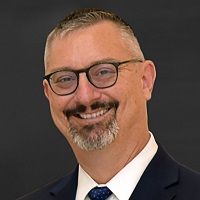Social Security Fairness Act: Five Financial Planning Issues to Revisit
More money as a public-sector retiree is great, but there could be unintended consequences with taxes, Medicare and more if you're not careful.


For decades, public-sector retirees with state-backed pensions have faced reductions in their Social Security benefits due to the Windfall Elimination Provision (WEP) and the Government Pension Offset (GPO).
These provisions were designed to adjust Social Security payments for those receiving government pensions. But now, that’s all changed.
With the passage of the Social Security Fairness Act (SSFA), both WEP and GPO have been repealed. This brings significant financial implications for millions of public-sector retirees.
From just $107.88 $24.99 for Kiplinger Personal Finance
Become a smarter, better informed investor. Subscribe from just $107.88 $24.99, plus get up to 4 Special Issues

Sign up for Kiplinger’s Free Newsletters
Profit and prosper with the best of expert advice on investing, taxes, retirement, personal finance and more - straight to your e-mail.
Profit and prosper with the best of expert advice - straight to your e-mail.
The Social Security Fairness Act, summarized
By eliminating both WEP and GPO, the SSFA guarantees that pension-eligible retirees who paid into the Social Security system will receive their full benefits, rather than having them reduced due to their public pension.
This correction helps level the playing field for teachers, firefighters, police officers and other public servants who spent part or all of their careers contributing to Social Security.
Now that we’ve covered the basics, let’s unpack the details.
What the Social Security Fairness Act means for retirees
The SSFA, which was signed into law by President Joe Biden on January 5, 2025, increases Social Security payments for those previously affected by WEP and GPO:
- Employees subject to WEP will see an average increase of $360 per month
- Spouses impacted by GPO can expect an average boost of $700 per month
- Widows or widowers affected by GPO will receive an average increase of $1,190 per month
The new law is retroactive to benefits payable after December 2023, which means that retirees affected by the law will receive a lump sum equal to the value they would’ve received since the start of 2024.
Who benefits from the SSFA?
This change in policy is intended to ensure that public-sector retirees who paid into Social Security during part or all their careers receive the full Social Security benefits they’ve earned, without reductions from the WEP or the GPO.
For example, let’s say Sam is a federal employee who is eligible for a pension, but who also paid into Social Security prior to becoming a federal employee. Previously, WEP would’ve reduced his Social Security benefits to account for this pension income. With the passage of the SSFA, this offset is eliminated.
Similarly, Amanda has just retired after 30 years of teaching. Her husband is a high-earning construction contractor. Previously, she would’ve seen any spousal and survivor benefits reduced by the GPO due to her teacher’s pension. Now, under the new law, she will receive the full benefit amount.
What should you do?
For those who’ve received reduced benefits due to WEP or GPO, the Social Security Administration is automatically adjusting payments and issuing retroactive payments.
Beneficiaries do not need to reapply for Social Security, but they should ensure their mailing address and direct-deposit details are up to date through the SSA website.
Key financial planning considerations for public-sector retirees
Having more money is a good problem to have, but affected retirees need to consider these five potential implications of the SSFA’s passage:
- Tax brackets. Social Security benefits are partially taxable based on income. Higher Social Security payments may push some retirees into a higher tax bracket, or increase the taxable portion of their benefits. Retirees could also move into a higher capital gains tax bracket.
- Medicare costs. Medicare Part B and D premiums are based on income and have a two-year look-back period. Higher Social Security benefits today could push retirees into a higher premium bracket in the future.
- Tax mitigation strategies. The additional income may impact required minimum distributions (RMDs) and Roth conversion strategies.
- Investment taxes. An increase in income may trigger the net investment income tax (NIIT) for individuals with a modified adjusted gross income (MAGI) above $200,000 (single) or $250,000 (married filing jointly).
- Income-based programs. Retirees who were previously eligible for Supplemental Nutrition Assistance Program (SNAP) or other programs could lose their eligibility due to increased income.
Looking ahead: The future of Social Security
The repeal of WEP and GPO represents a major shift in Social Security policy. While this change increases benefits for some public-sector employees, it could also place additional financial strain on Social Security’s trust funds, potentially accelerating the timeline for depletion if no new revenue sources are introduced.
Regardless of the future, the SSFA is law today. Affected individuals should take action as soon as possible by reassessing their retirement plans with the help of an experienced financial adviser.
Related Content
- Social Security Fairness Act Payments Checklist: Nine Things to Know
- How Federal Retirees Can Make SSFA Repeals Work for Them
- The Social Security Fairness Act: Good News for Retirees?
- Five Changes Coming for Social Security in 2025
- Are You Prepared for the Evolution of Retirement?
Profit and prosper with the best of Kiplinger's advice on investing, taxes, retirement, personal finance and much more. Delivered daily. Enter your email in the box and click Sign Me Up.

Daniel Goodman is a Senior Financial Planner at Wealth Enhancement Group with over 20 years of experience in corporate and personal financial planning. Throughout his career, Daniel has helped individuals and businesses navigate complex financial decisions, focusing on tailored strategies for long-term success. His expertise in investment management and data-driven financial planning enables him to deliver customized solutions that meet clients' unique needs and helps them to achieve their financial goals.
-
 4 Great Tools to DIY Your Own Financial Plan
4 Great Tools to DIY Your Own Financial PlanSmart Savings Several tools picked out by Kiplinger that DIYers can use to make their own financial plan.
-
 The 7-Month Deadline That Sets Your Lifetime Medicare Premiums
The 7-Month Deadline That Sets Your Lifetime Medicare PremiumsUnderstanding Medicare enrollment is crucial, as missing deadlines can lead to permanent late enrollment penalties and gaps in coverage.
-
 Retirees Living in Portugal: You Need a Post-NHR Tax Strategy
Retirees Living in Portugal: You Need a Post-NHR Tax StrategyWhen your 10-year Non-Habitual Resident tax break ends, you could see your tax rate soar. Take steps to plan for this change well before the NHR window closes.
-
 The 7-Month Deadline That Determines Your Lifetime Medicare Premiums
The 7-Month Deadline That Determines Your Lifetime Medicare PremiumsUnderstanding Medicare enrollment is crucial, as missing deadlines can lead to permanent late enrollment penalties and gaps in coverage.
-
 If You're a U.S. Retiree Living in Portugal, Your Tax Plan Needs a Post-NHR Strategy ASAP
If You're a U.S. Retiree Living in Portugal, Your Tax Plan Needs a Post-NHR Strategy ASAPWhen your 10-year Non-Habitual Resident tax break ends, you could see your tax rate soar. Take steps to plan for this change well before the NHR window closes.
-
 Could Target-Date Funds With Built-In Income Guarantees Be the Next Evolution in Retirement Planning?
Could Target-Date Funds With Built-In Income Guarantees Be the Next Evolution in Retirement Planning?With target-date funds falling short on income certainty, retirement plans should integrate guaranteed income solutions. Here is what participants can do.
-
 Stocks Chop as the Unemployment Rate Jumps: Stock Market Today
Stocks Chop as the Unemployment Rate Jumps: Stock Market TodayNovember job growth was stronger than expected, but sharp losses in October and a rising unemployment rate are worrying market participants.
-
 7 Ways to Plan Now to Save on Medicare IRMAA Surcharges Later
7 Ways to Plan Now to Save on Medicare IRMAA Surcharges LaterUnderstand the critical two-year lookback period and why aggressive planning before you enroll in Medicare is the most effective way to minimize IRMAA.
-
 The Delayed November Jobs Report Is Out. Here's What It Means for the Fed and Rate Cuts
The Delayed November Jobs Report Is Out. Here's What It Means for the Fed and Rate CutsThe November jobs report came in higher than expected, although it still shows plenty of signs of weakness in the labor market.
-
 The 'Best of Both Worlds' Rule of Retirement Spending
The 'Best of Both Worlds' Rule of Retirement SpendingIt's the 4% rule on steroids. Here's what it is and why it may work for you.
-
 Don't Let the Court Decide: Test Your Knowledge on Avoiding Probate
Don't Let the Court Decide: Test Your Knowledge on Avoiding ProbateQuiz Test your basic understanding of why having a estate plan is crucial to avoiding probate in our quick quiz.